Once again. The Milky Way River of Souls could have
been said to stretch
between the twins in Gemini
and the inseparable pair at the Fish-hook of Maui:
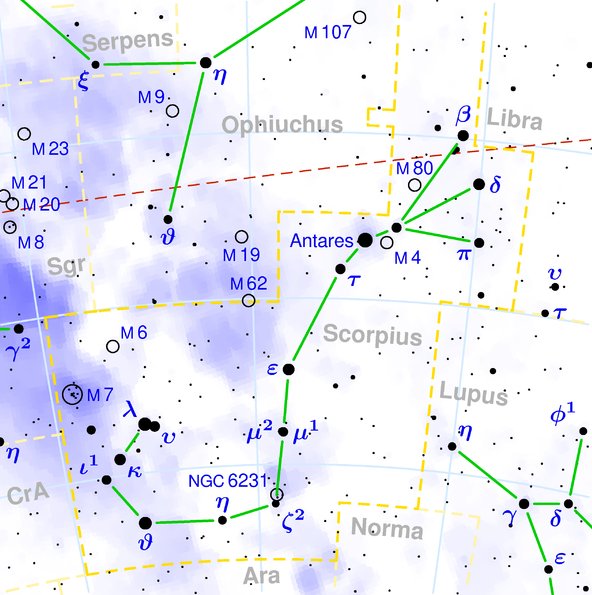
... In the legends of the
Polynesian Islanders, notably those of the Hervey
group, the stars in the Scorpion, from the two
lettered μ to λ
and υ,

were the Fish-hook of Maui,
with which that god drew up from the depths the
great island Tongareva; and the names and legend
that Ellis, in his Polynesian Researches,
applied to Castor and Pollux in Gemini, the Reverend
Mr. W. W. Gill asserts, in his Myths and Songs of
the South Pacific, belong here, and are the
favorites among the story-tellers of the Hervey
Islands. They make the star μ¹
a little girl, Piri-ere-ua, the Inseparable,
with her smaller brother, μ²,
fleeing from home to the sky when ill treated by
their parents, the stars λ
and υ, who followed them
and are still in pursuit ...
Piri-ere-ua, the
Inseparable, was a girl (μ¹)
and she had a little brother (μ²).
In some of the Gemini illustrations we can
imagine that one of them was a boy and the other a
girl. The Club was in the right hand of Pollux and
in the left hand of Castor was an arrow (a 'flying
tanist spear').

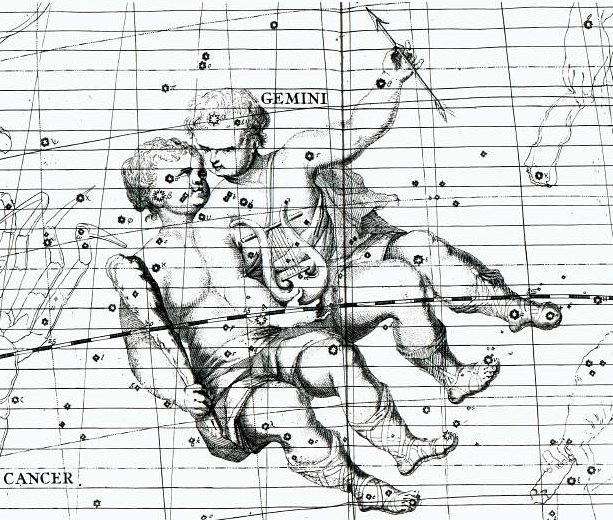
I suggest the dream soul station
Te Piringa Aniva was an allusion to the
inseparable pair up in the sky at the Fish-hook of Maui,
half a year away from the also inseparable Castor and
Pollux down on earth. The Mouth of Gemini was
between η
and μ:

|
16 (80 +
26) |
2 |
APRIL 19 |
20 |
21
(111) |
6 * 29½ |
OCT 16
(289) |
 |
 |
 |
 |
 |
|
Ga1-26 |
Ga1-29 |
Ga1-30 |
Ga2-1 |
Ga8-6 (209) |
|
1 kavakava atua |
1 pua |
FURUD |
CANOPUS |
NASH |
|
MOUTH
OF THE TWINS |
|
Te Kioe Uri (*81 -
*93) |
Te
Piringa Aniva (*94 - *106) |
|
... The cult
place of Vinapu is located
between the fifth and sixth segment
of the dream voyage of Hau Maka.
These segments, named 'Te Kioe
Uri' (inland from Vinapu)
and 'Te Piringa Aniva' (near
Hanga Pau Kura) flank
Vinapu from both the west and
the east. The decoded meaning of the
names 'the dark rat' (i.e., the
island king as the recipient of
gifts) and 'the gathering place of
the island population' (for the
purpose of presenting the island
king with gifts) links them with the
month 'Maro', which is June.
Thus the last month of the Easter
Island year is twice connected with
Vinapu. Also, June is the
month of summer solstice [a mistake:
south of the equator it is winter
solstice], which again points to the
possibility that the Vinapu
complex was used for astronomical
purposes ...
 |
|
1 kavakava atua |
1 kohe. |
1 nehenehe |
1 pua |
1 harahara |
1 hua taru. |
1 makere |
|
Makere and Hata. were
cock-roaches, and then followed
Tuere Heu. and Tureme.
.jpg)
Hata. 1.
Table, bureau. P Pau.: afata,
a chest, box. Mgv.: avata, a
box, case, trunk, coffin. Mq.:
fata, hata, a piece of
wood with several branches serving
as a rack, space, to ramify, to
branch; fataá, hataá,
stage, step, shelf. Ta.: fata,
scaffold, altar. 2. Hakahata,
to disjoint; hakahatahata, to
loosen, to stretch. P Pau.: vata,
an interval, interstice. Mgv.:
kohata, the space between two
boards, to be badly joined;
akakohata, to leave a space
between two bodies badly joined;
hakahata, to be large, broad,
wide, spacious, far off. Mq.:
hatahata, fatafata,
having chinks, not tightly closed,
disjointed. Ta.: fatafata,
open. 3. Hatahata, calm,
loose, prolix, vast. Mgv.:
hatahara, broad, wide, spacious,
at one's ease. Ta.: fatafata,
free from care. Mq.: hatahata,
empty, open. 4. Hatahata,
tube, pipe, funnel. Churchill. Sa.:
fata, a raised house in which
to store yams, a shelf, a
handbarrow, a bier, a litter, an
altar, to carry on a litter;
fatāmanu,
a scaffold. To.: fata,
a loft, a bier, a handbarrow, to
carry on a bier; fataki,
a platform. Fu.: fata,
a barrow, a loft; fatataki,
two sticks or canes attached to each
other at each side of a house post
to serve as a shelf. Niuē:
fata,
a cage, a handbarrow, a shelf, a
stage, (sometimes) the upper story
of a house. Uvea: fata,
a barrow, a bier. Fotuna:
fata,
a stage. Ta.: fata,
an altar, a scaffold, a piece of
wood put up to hang baskets of food
on; afata,
a chest, a box, a coop, a raft, a
scaffold. Pau.: fata,
a heap; afata,
a box, a chest. Ma.: whata,
a platform or raised storehouse for
food, an altar, to elevate, to
support. Moriori: whata,
a raft. Mq.: fata,
hata,
hataá,
shelves. Rapanui: hata,
a table. Ha.: haka,
a ladder, an artificial henroost;
alahaka,
a ladder. Mg.: ata,
a shelf; atamoa,
a ladder; atarau,
an altar. Mgv.: avata,
a coffer, a box. Vi.: vata,
a loft, a shelf; tāvata,
a bier. The Samoan fata
is a pair of light timbers pointed
at the ends and tied across the
center posts of the house, one in
front, the other behind the line of
posts; rolls of mats and bales of
sennit may be laid across these
timbers; baskets or reserved
victuals may be hung on the ends.
The litter and the barrow are two
light poles with small slats lashed
across at intervals. The Marquesan
fata
is a stout stem of a sapling with
the stumps of several branches, a
hat tree in shape, though found
among a barehead folk. These
illustrations are sufficient to show
what is the common element in all
these fata
identifications, light cross-pieces
spaced at intervals. With this for a
primal signifaction it is easy to
see how a ladder, a raft, a
henroost, an altar come under the
same stem for designation. Perhaps
Samoan fatafata
the breast obtains the name by
reason of the ribs; it would be
convincing were it not that the
plumpness of most Samoans leaves the
ribs a matter of anatomical
inference. Churchill 2. |
|
APRIL 16 |
17 (472) |
18 (*393) |
19 (*29) |
20 (*30) |
21 (111) |
22 |
 |
 |
 |
 |
 |
 |
 |
|
Ga1-26 |
Ga1-27 |
Ga1-28 |
Ga1-29 |
Ga1-30 |
Ga2-1 |
Ga2-2 |
|
μ Orionis (90.3), χ² Orionis (90.5) |
6h (91.3 = 273.4 - 182.1)
ν
Orionis
(91.4),
θ
Columbae (91.5),
π
Columbae (91.6)
*50.0 = *91.4 - *41.4 = *232.0 -
*172.0 |
ξ Orionis
(92.5) |
Al Han'ah-4 (Brand) /
Maru-sha-pu-u-mash-mashu-7 (Front of
the Mouth of the Twins)
TEJAT PRIOR
=
η
Gemini
(93.4),
γ
Monocerotis (93.5),
κ
Aurigae (93.6),
κ
Columbae (93.8)
*52.0 = *93.4 - *41.4 |
FURUD
= ζ Canis Majoris
(94.9) |
Well-22 (Tapir) /
Arkū-sha-pu-u-mash-mashu-8
(Back of the Mouth of the Twins)
δ
Columbae (95.2),
TEJAT POSTERIOR
=
μ
Gemini,
MIRZAM (The Roarer) = β Canis
Majoris
(95.4),
CANOPUS
(Canopy) =
α
Carinae
(95.6),
ε
Monocerotis (95.7),
ψ1
Aurigae (95.9)
*54.0 = *95.4 - *41.4 |
no star listed (96) |
|
... The Pythagoreans make Phaeton
fall into Eridanus, burning part of
its water, and glowing still at the
time when the Argonauts passed by.
Ovid stated that since the fall the
Nile hides its sources. Rigveda
9.73.3 says that the Great Varuna
has hidden the ocean. The
Mahabharata tells in its own style
why the 'heavenly Ganga' had to be
brought down. At the end of the
Golden Age (Krita Yuga) a
class of Asura who had fought
against the 'gods' hid themselves in
the ocean where the gods could not
reach them, and planned to overthrow
the government. So the gods implored
Agastya (Canopus, alpha
Carinae = Eridu) for help. The great
Rishi did as he was bidden, drank up
the water of the ocean, and thus
laid bare the enemies, who were then
slain by the gods. But now, there
was no ocean anymore! Implored by
the gods to fill the sea again, the
Holy One replied: 'That water in
sooth hath been digested by me. Some
other expedient, therefore, must be
thought of by you, if ye desire to
make endeavour to fill the ocean ...
 |
|
June 19 (170) |
20 (513 / 3) |
SOLSTICE |
22 (*93) |
23 (174) |
ST JOHN'S DAY |
25 |
|
°June
15 (*86) |
16 |
17 (168) |
18 |
19 |
20 (*91) |
SOLSTICE |
|
'May 23 (*63) |
24 (12 * 12) |
25 (145) |
26 |
27 |
28 (*68) |
29 |
|
9
(*49 = 7 * 7) |
"May 10 (130) |
Vaitu Potu 11 |
12 (*52) |
12 (*418) |
14 (*54) |
15 (500) |
|
29 = 170 - 141 |
130 - 100 |
31 |
32 |
33 |
34 |
35 = *55 - *20 |
|
CLOSE TO THE FULL MOON: |
|
OCT 16 |
17 (290) |
18 (*394 - *183) |
19 (475 - 183) |
20 |
21 (*214) |
22 (295) |
 |
 |
 |
 |
 |
 |
 |
|
Ga8-6 (31 + 178) |
Ga8-7 (210) |
Ga8-8 |
Ga8-9 |
Ga8-10 |
Ga8-11
(214) |
Ga8-12 |
|
Winnowing Basket-7 (Leopard)
18h (273.4)
*232.0 = *273.4 - *41.4
NASH
(Point) =
γ
Sagittarii
(273.7),
θ
Arae (273.8) |
ZHŌNGSHĀN =
ο
Herculis
(274.0),
π
Pavonis (274.6) |
ι Pavonis (275.1),
POLIS = μ Sagittarii
(275.9)
MENKAR (α Ceti) |
η Sagittarii (276.9) |
Purva Ashadha-20 (Elephant Tusk,
Fan, Winnowing Basket) |
KAUS BOREALIS = λ Sagittarii
(279.3) |
|
KAUS MEDIUS
=
δ
Sagittarii,
κ
Lyrae (277.5),
TUNG HAE (Heavenly Eastern Sea) =
η
Serpentis
(277.7),
SHAOU PIH (Minor Minister) =
φ
Draconis
(277.8),
KWEI SHE =
χ
Draconis
(277.9 |
φ
Oct. (278.1),
KAUS AUSTRALIS =
ε
Sagittarii
(278.3),
ξ
Pavonis (278.4),
AL ATHFAR (The Talons of the
Falling Eagle)
=
μ
Lyrae
(278.6)
*237.0 = *278.4 - *41.4 |

... As has already been mentioned,
the Delphians worshipped Dionysus
once a year as the new-born child,
Liknites, 'the Child in the
Harvest Basket', which was a
shovel-shaped basket of rush and
osier used as a harvest basket, a
cradle, a manger, and a
winnowing-fan for tossing the grain
up into the air against the wind, to
separate it from the chaff. The
worship of the Divine Child was
established in Minoan Crete, its
most famous early home in Europe. In
1903, on the site of the temple of
Dictaean Zeues - the Zeus who was
yearly born in Rhea's cave at Dicte
near Cnossos, where Pythagoras spent
'thrice nine hallowed days' [27] of
his initiation - was found a Greek
hymn which seems to preserve the
original Minoan formula in which the
gypsum-powdered, sword-dancing
Curetes, or tutors, saluted the
Child at his birthday feast. In it
he is hailed as 'the Cronian one'
who comes yearly to Dicte mounted on
a sow and escorted by a
spirit-throng, and begged for peace
and plenty as a reward for their
joyful leaps ... |
|
Dec 19 (*273) |
20 (354) |
SOLSTICE |
22 |
23 (174 + 183) |
X-MAS EVE |
25 (359) |
|
°Dec 15 (*269) |
16 (350) |
17 |
18 |
19 |
20 (354) |
21 |
|
'Nov 22 (*246) |
23 |
24 (328) |
25 |
26 (*250) |
27 |
28 (332) |
|
"Nov 8 |
9 |
10 (314) |
11 |
12 (*236) |
13 |
14 |
|
*273 - *141 |
*133 |
*134 |
*135 |
*236 - *100 |
*137 |
*138 |
According to my interpretation of the Gregorian
calendar also Sirius functioned as a kind of fish-hook, by
drawing up the 2nd half of the year:
|
Te Piringa Aniva (*94 - *106) |
|
1 makere 1 hata. |
1 tuere heu. |
1 tureme
1 he rangi koro vao. |
2 he tua mamari manu. |
3 he tua manu auau |
|
... Then Teke said to
Oti, 'Go to the sugarcane plantation [ka
oho ki roto ki te toa] and carefully
break off [ka hahati] pieces of
cane. Not one variety shall be left
(i.e., shall be omitted) when the pieces
of sugarcane are taken along.'
Teke and
Oti went with their assistants, entered
into the sugarcane plantation, and broke
off pieces everywhere. Teke said the
names [he nape i te ingoa] of all
the different varieties of sugarcane.
[E:69-70]
|
he toa (sugarcane) |
|
1 |
he |
rangi koro vao. |
a Teke. a Oti. |
|
2 |
tua mamari manu. |
|
3 |
tua manu auau |
|
4 |
ruma. |
|
5 |
tuitui koviro. |
|
6 |
vitiviti. |
|
7 |
marikuru = The Ash |
... Toa 'Canne
à sucre en fleur' (blooming
sugar cane) is the explanation
given by Bishop Jaussen
(according to Barthel): Die in
den Metorogesängen oft
vorkommende Benennung der
Zeichen 65 bzw. 66 als toa
wurde von Jaussen auf das
Zuckerrohr bezogen; eine
Auffassung, die keine Stütze in
den Tafeltexten findet.

Berücksichtigt man aber, daß die
Metorogesänge phonetisch nicht
immer ganz exakt
niedergeschrieben wurden, so
findet man eine sinnvolle
Lösung, wenn man zwischen tôa
und to'a underscheidet:
Das erste Wort bedeutet
Zuckerrohr, das zweite dagegen
Feind, Mörder. Englert 1948,
503: 'caña de azucar'
bzw. 'enemigo; asesino'.
Ferner: he to'a o te îka,
el que ha dado muerte
a una persona' ...
|
 |
 |
|
toa |
rau hei |
... There
are 12 Chinese types of year:
|
Rat |
Ox |
Tiger |
Rabbit |
Dragon |
Snake |
|
1 |
2 |
3 |
4 |
5 |
6 |
|
Horse |
Goat |
Monkey |
Rooster |
Dog |
Pig |
|
7 |
8 |
9 |
10 |
11 |
12 |
The first
day of each Chinese year
will always fall sometime
between January 21 and
February 21, inclusive. The
traditional Chinese calendar
is lunisolar, like
the Hebrew calendar but
unlike the Western
(Gregorian) solar calendar
or the Islamic lunar
calendar
...
|
|
APRIL
22 |
23 |
24 |
(*35 = 115 - 80) |
26 |
27 |
(118
= 4 * 29½) |
 |
 |
 |
 |
 |
 |
 |
|
Ga2-2 |
Ga2-3 |
Ga2-4 |
Ga2-5 (35) |
Ga2-6 |
Ga2-7 |
Ga2-8 |
|
CLOSE
TO THE
SUN: |
|
no star listed (96) |
β Monocerotis, ν Gemini (97.0) |
no star listed (98) |
ν Puppis (99.2), ψ3 Aurigae (99.4), ψ2
Aurigae (99.5)
*58.0 = *99.4 - *41.4
GEMMA (α Cor. Bor.) |
ψ4 Aurigae (100.5),
MEBSUTA (Outstretched) = ε Gemini
(100.7) |
SIRIUS
= α Canis Majoris
(101.2), ψ5 Aurigae (101.4), ν Gemini
(101.6), ψ6 Aurigae (101.7)
*60.0 = *101.4 - *41.4 |
τ
Puppis (102.2),
ψ7
Aurigae (102.4)
*61.0 = *102.4 - *41.4 |
|
... In other words, the ancient Druidic
religion based on the oak-cult will be
swept away by Christianity and the door
- the god Llyr - will languish forgotten
in the Castle of Arianrhod, the
Corona Borealis. This helps us to
understand the relationship at Rome of
Janus and the White Goddess Cardea who
is ... the Goddess of Hinges who came to
Rome from Alba Longa. She was the hinge
on which the year swung - the ancient
Latin, not the Etruscan year - and her
importance as such is recorded in the
Latin adjective cardinalis -
as we say in
English 'of cardinal importance - which
was also applied to the four main winds;
for winds were considered as under the
sole direction of the Great Goddess
until Classical times ... |
|
June 25 |
26 |
27 |
28 |
29
(180) |
30
(*101) |
July
1 |
|
SOLSTICE |
°June
22 |
23 |
ST
JOHN'S DAY |
25 (*96) |
26 (6
* 29½) |
27 |
|
'May
29 |
30 |
31 |
'June
1 (*72) |
2 |
3
(154) |
4 |
|
"May
15 (500) |
16
(136) |
17 |
Vaitu Potu 18 |
19 |
20 |
21
(*61) |
|
35 |
36 =
136 - 100 |
37 |
38 |
39 =
180 - 141 |
40 |
41 |
|
CLOSE
TO THE FULL MOON: |
|
OCT
22 (295) |
23 |
24 |
25 |
26 |
27
(300) |
28 |
 |
 |
 |
 |
 |
 |
 |
|
Ga8-12 |
Ga8-13 (216) |
Ga8-14 |
Ga8-15 |
Ga8-16 |
Ga8-17 (220) |
Ga8-18 |
|
KAUS BOREALIS = λ Sagittarii
(279.3) |
ν
Pavonis (280.4),
κ
Cor. Austr.
(280.9)
*239.0 = *280.4 - *41.4 |
Abhijit-22 (Victorious)
θ
Cor. Austr.
(281.0),
VEGA
= α Lyrae
(281.8) |
no star listed (282) |
ζ
Pavonis (283.4),
λ
Cor. Austr. (283.6),
DOUBLE DOUBLE =
ε
Lyrae
(283.7),
ζ
Lyrae (283.8)
*242.0 = *283.4 - *41.4 |
South Dipper-8 (Unicorn)
Φ
Sagittarii
(284.0),
μ
Cor. Austr. (284.6),
η
Cor. Austr.,
θ
Pavonis (284.8) |
SHELIAK
(Tortoise) =
β
Lyrae,
ν
Lyrae (285.1),
ο Draconis (285.5).
λ
Pavonis (285.7)
ATLAS (27 Tauri)
|
|
Dec 25 |
Dec
26 (360) |
27 |
28 |
29 |
30
(364) |
31 |
|
SOLSTICE |
°Dec
22 |
23 |
24 |
25 |
26
(360) |
27 |
|
'Nov
28 |
29
(360 - 27) |
30
(*254) |
'Dec
1 |
2 |
3 |
4 |
|
"Nov
14 |
15
(360 - 41) |
16
(320) |
17 |
18 (*242) |
19 |
20
(*244) |
|
*138 |
*139 |
*240
- *100 |
*282
- *141 |
*142 |
*143 |
*144 |
|
...
'Tell us a story!' said the March Hare.
'Yes, please do!' pleaded Alice. 'And be
quick about it', added the Hatter, 'or
you'll be asleep again before it's
done.' 'Once upon a time there were
three little sisters', the Dormouse
began in a great hurry: 'and their names
were Elsie, Lacie, and Tillie; and they
lived at the bottom of a well — '
 |
|
Te Piringa Aniva (*94 - *106) |
|
4 he ruma. |
5 he tuitui koviro. |
6 he vitiviti. |
7 he marikuru = the Ash |
|
APRIL 29 |
30 |
MAY 1 (*41) |
2
(122) |
 |
 |
 |
 |
|
... The brothers
had no idea what Maui was up to now,
as he paid out his line. Down, down
it sank, and when it was at the
bottom Maui lifted it slightly, and
it caught on something which at once
pulled very hard. Maui pulled also,
and hauled in a little of his line.
The canoe heeled over, and was
shipping water fast. 'Let it go!'
cried the frightened brothers, but
Maui answered with the words that
are now a proverb: 'What Maui has
got in his hand he cannot throw
away.' 'Let go?' he cried. 'What did
I come for but to catch fish?' And
he went on hauling in his line, the
canoe kept taking water, and his
brothers kept bailing frantically,
but Maui would not let go. Now
Maui's hook had caught in the
barge-boards of the house of
Tonganui, who lived at the bottom of
that part of the sea
and whose name
means Great South; for it was as far
to the south that the brothers had
paddled from their home. And Maui
knew what it was that he had caught,
and while he hauled at his line he
was chanting the spell that goes: O
Tonganui / why do you hold so
stubbornly there below? // The power
of Muri's jawbone is at work on you,
/ you are coming, / you are caught
now, / you are coming up, / appear,
appear. // Shake yourself, /
grandson of Tangaroa the little. The
fish came near the surface then, so
that Maui's line was slack for a
moment, and he shouted to it not to
get tangled. But then the fish
plunged down again, all the way to
the bottom. And Maui had to strain,
and haul away again. And at the
height of all this excitement his
belt worked loose, and his maro
fell off and he had to kick it from
his feet. He had to do the rest with
nothing on ...
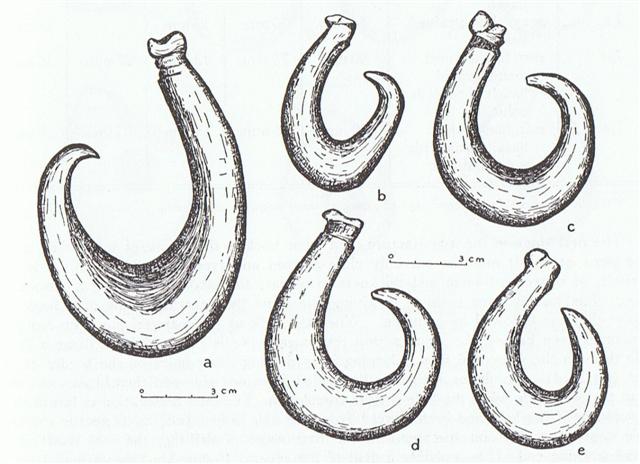 |
|
Ga2-9 |
Ga2-10 |
Ga2-11 |
Ga2-12 (42) |
|
Mash-mashu-sha-Risū-9 (Twins of the
Shepherd)
θ
Gemini (103.0),
ψ8
Aurigae (103.2),
ALHENA
=
γ
Gemini
(103.8),
ψ9
Aurigae (103.9) |
ADARA (Virgins)
= ε Canis Majoris
(104.8) |
ω
Gemini (105.4),
ALZIRR (Button)
= ξ Gemini
(105.7),
MULIPHEIN (Oaths) =
γ
Canis Majoris
(105.8),
MEKBUDA (Contracted) =
ζ
Gemini
(105.9)
*64.0 = *105.4 - *41.4
|
7h (106.5)
no star listed (106) |
|
July 2 |
3
(*104 = 8 * 13) |
4 (185) |
5 |
|
ºJune 28 |
29 (180) |
SIRIUS (*41 + *60) |
ºJuly 1 (182) |
|
'June 5 |
6
(157) |
7
(*78) |
8 |
|
"May 22 |
23 (*63) |
Vaitu Potu 24 |
25 (145) |
|
42 |
43 |
44 = 185 - 141 |
45 = 145 - 100 |
|
CLOSE TO THE FULL MOON: |
|
OCT 29 |
30 (303) |
31 (*224) |
NOV 1 |
|
χ
Oct. (286.0),
AIN AL RAMI (Eye of the Archer) =
ν
Sagittarii
(286.2),
υ
Draconis (286.4),
δ
Lyrae (286.3),
κ
Pavonis (286.5),
ALYA (Fat Tail) =
θ
Serpentis
(286.6)
*245.0 = *286.4 - *41.4 |
ξ Sagittarii (287.1), ω Pavonis
(287.3), ε Aquilae, ε Cor. Austr.,
SULAPHAT (Little Tortoise Shell) = γ
Lyrae
(287.4), λ Lyrae (287.7),
ASCELLA (Armpit) = ζ Sagittarii,
BERED = i Aquilae (Ant.)
(287.9)
*246.0 = *287.4 - *41.4 |
Al Na'ām-18 (Ostriches)
/
Uttara Ashadha-21 (Elephant tusk,
small bed)
NUNKI
= σ Sagittarii
(288.4), ζ Cor. Austr. (288.5),
MANUBRIUM = ο Sagittarii
(288.8), ζ Aquilae (288.9)
*247.0 = *288.4 - *41.4 |
19h (289.2)
λ
Aquilae (Ant.) (289.1),
γ
Cor. Austr (289.3),
τ
Sagittarii (289.4),
ι
Lyrae (289.5),
δ
Cor.
Austr. (289.8)
*248.0 = *289.4 - *41.4 |
|
... This [σ
Sagittarii] has been identified with
Nunki of the Euphratean
Tablet of the Thirty Stars, the
Star of the Proclamation of the Sea,
this Sea being the quarter
occupied by Aquarius, Capricornus,
Delphinus, Pisces, and Pisces
Australis. It is the same space in
the sky that Aratos designated as
Water ...

.jpg) |
|
Jan 1 |
2 |
3
(368) |
4 |
|
°Dec 28 |
29 |
30 (364) |
31 |
|
'Dec 5 |
6
(340) |
7
(*261) |
8 |
|
"Nov 21 |
22 |
23 (327) |
24 (*248) |
|
*145 |
*146 |
*147 = *288 - *141 |
*148 = *248 - *100 |
The Gregorian calendar
was launched by the Pope Gregory XIII in AD
1582 and its date ºJune 30 corresponded to the place not
only of heliacal Sirius but also to the day when the
Button star ξ in Gemini rose together with the Sun. Furthermore,
half a year away was Nunki and the Teapot.
At the time of rongorongo Sirius was still at right
ascension day *101, although the precession had
moved the rest of the stars with on average about 4
days later in the year to around right ascension day *105.
Instead of Nunki (σ) time was now at the beginning of the
handle (Φ) of the South Dipper which was half a year
away from Sirius:
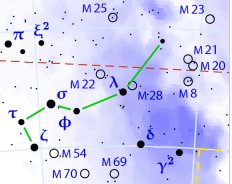
In order to reach the epoch when the Fish-hook of
Maui was at a cardinal point for the sun we have
to go back to the time of the Bull. Here the
Inseparable Pair (they could not have been twins
because the girl was older than her little brother),
viz. μ Scorpii, were rising with the Sun in day 270
when the Full Moon was at day 88:
|
SEPT
26 |
27
(270 = 3 * 90) |
28
(454 - 183) |
29 |
30
(*193) |
 |
 |
 |
 |
 |
|
Ga7-20 |
Ga7-21 |
Ga7-22 |
Ga7-23 (192) |
Ga7-24 |
|
ATRIA
=
α
Tr. Austr.
(253.9) |
Tail-6 (Tiger)
WEI (Tail) = ε Scorpii,
η Arae (254.3),
DENEBAKRAB
= μ Scorpii
(254.7) |
ι Ophiuchi (255.3),
GRAFIAS
= ζ Scorpii
(255.4)
*214.0 = *255.4 - *41.4 |
κ Ophiuchi (256.2), ζ Arae (256.5), ε
Arae (256.8),
CUJAM
(Club) = ε Herculi
(256.9) |
no star listed (257) |
|
Nov
29 |
30
(*254) |
Dec 1 |
2
(336) |
3 |
|
°Nov 25 |
26
(*250) |
27 |
28
(332) |
29 |
|
'Nov
2 |
3
(*227) |
4 |
5 |
6
(310) |
|
"Oct
19 |
20 |
21 |
22
(295) |
23
(*216) |
|
CLOSE TO THE FULL MOON: |
|
MARCH
28 |
29
(88) |
30
(454) |
31
(90) |
APRIL
1 |
|
TABIT
=
π³
Orionis
(71.7),
π²
Orionis (71.9)
320 (South Pole star, Dramasa) - 71
(Tabit) = 249 (Antares) |
π4
Orionis (72.1),
ο¹
Orionis (72.4),
π5
Orionis (72.8)
*31.0 = *72.4 - *41.4 |
π¹
Orionis (73.0),
ο²
Orionis (73.4),
HASSALEH
=
ι
Aurigae
(73.6),
π6
Orionis (73.9)
*32.0 = *73.4 - *41.4 |
ALMAAZ (The Male Goat)
=
ε
Aurigae
(74.7),
HAEDUS I
=
ζ
Aurigae
(74.8) |
HAEDUS II
= η Aurigae
(75.9) |
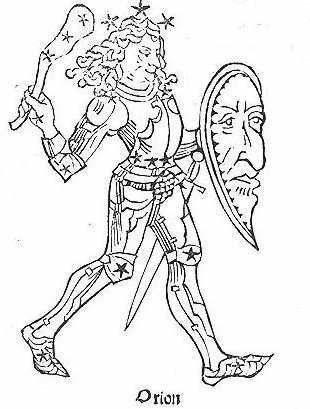 |
|
May
31 (151) |
June
1 |
2
(*73) |
3 |
4 (*440) |
|
°May 27 |
28
(148) |
29 |
30 |
31
(*436) |
|
'May 4 (124) |
5
(*45) |
6 |
7 |
8
(*413) |
|
"April 20 (*30) |
21
(111) |
22 |
23 |
24
(*399) |
|
1 |
Horn |
α
Virginis (Spica) |
Crocodile |
Oct 9 (282) |
 |
|
2 |
Neck |
κ
Virginis |
Dragon |
Oct 21 (294) |
|
3 |
Root |
α
Librae (Zuben Elgenubi) |
Badger |
Oct 31 (304) |
|
4 |
Room |
π
Scorpii (Vrischika) |
Hare |
Nov 17 (321) |
|
5 |
Heart |
σ
Scorpii |
Fox |
Nov 23 (327) |
|
6 |
Tail |
μ
Scorpii (Denebakrab) |
Tiger |
Nov 30 (294 + 40) |
|
7 |
Winnowing Basket |
γ
Sagittarii (Nash) |
Leopard |
Dec 19 (353) |
|
December solstice (355 = 80 + 275 =
289 + 66 = 282 + 73 = 334 + 21) |
Once again:
At the opposite side of the sky compared to the
Inseparable Pair (μ¹ and her
smaller brother μ²)
was day 88 (MARCH 29).
... On side B together with the four edges
is a series of notches that are clearly set in an
intentional pattern. The edges contain a total of 39
notches in groups of 6, 13, 7 and 13. A further 49
notches on side B are arranged in four
vertical lines of 13, 10, 12 and 13 respectively
plus a further notch that could be in either of the
middle two lines ... The grouping of the notches on
the plate suggests a time-related sequence. The
total number of notches (88) not only coincides with
the number of days in 3 lunations (88.5) but also
approximately with the number of days when the star
Betelgeuse (α Ori) disappeared from view each year
between its heliacal set (about 14 days before the
spring equinox around 33,000 BP) and its heliacal
rise (approximately 19 days before the summer
solstice). Conversely, the nine-month period when
Orion was visible in the sky approximately matched
the duration of human pregnancy, and the timing of
the heliacal rise in early summer would have
facilitated a ‘rule of thumb’ whereby, by timing
conception close to the reappearance of the
constellation, it could be ensured that a birth
would take place after the severe winter half-year,
but leaving enough time for sufficient nutrition of
the baby before the beginning of the next winter.
There is a resemblance between the anthropoid on
side A and the constellation Orion. None of these
factors is convincing when taken in isolation,
because of the high probability that apparently
significant structural and numerical coincidences
might have arisen fortuitously. However, taken
together they suggest that the anthropoid
represented an asterism equivalent to today’s
constellation of Orion, and that the ivory plate as
a whole related to a system of time reckoning linked
to the moon and to human pregnancy. If so, then
ethnographic comparisons would suggest that the
Geißenklösterle culture related their
‘anthropoid’ asterism to perceived cycles of cosmic
power and fertility ...
We can indeed count 270 + 183 = 365 + 88. From the
Inseparable Pair to the place half a year later -
when Orion with his left arm held out the fur of the
dead Old Lion as a Sign demonstrating it was time
for his reincarnation - there was very little food.
... Antares, visible in the
morning sky of December-January, came to stand for
summer heat; hence the saying, 'Rehua cooks
(ripens) all fruit'. The generally accepted version
of the Rehua myth, according to Best, is that
Rehua had two wives, the stars on either side
of Antares. One was Ruhi-te-rangi or
Pekehawani, the personification of summer
languor (ruhi), the other Whaka-onge-kai,
She-who-makes-food-scarce before the new crops can
be harvested ...
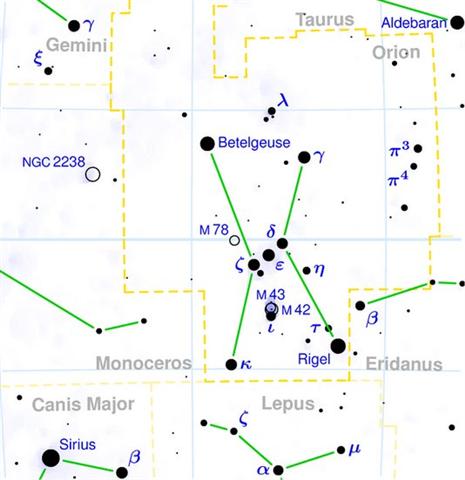
At the time of rongorongo heliacal Antares was in
day 329 (November 25), and this date surely was
alluding to MARCH 29 (88), which was 64 days earlier
than June 1 (152).
Here we will remember that the Explorers reached
Easter Island in "June 1 (152):
... On the twenty-fifth day [raa]
of the first month ('Vaitu Nui'), Ira and Makoi set
sail. (i te rua te angahuru marima raa o te vaitu
nui.i oho.mai ai a ira.ko Makoi), on the first
day [te raa po rae] of the month of June
('Maro'), the bow [te ihu] of Ira's canoe
touched land again. [E:17]
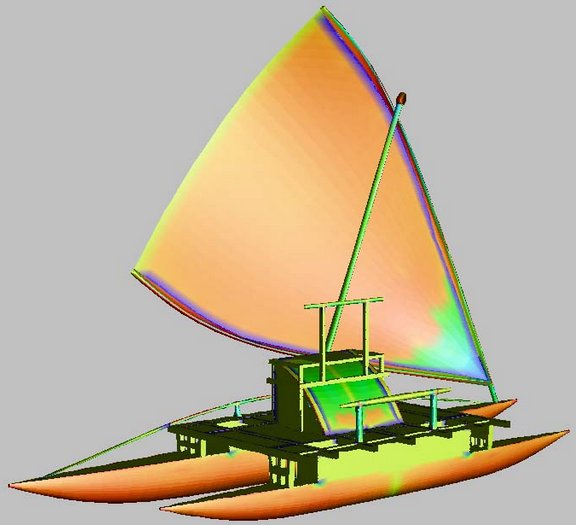
|










.jpg)























.jpg)







